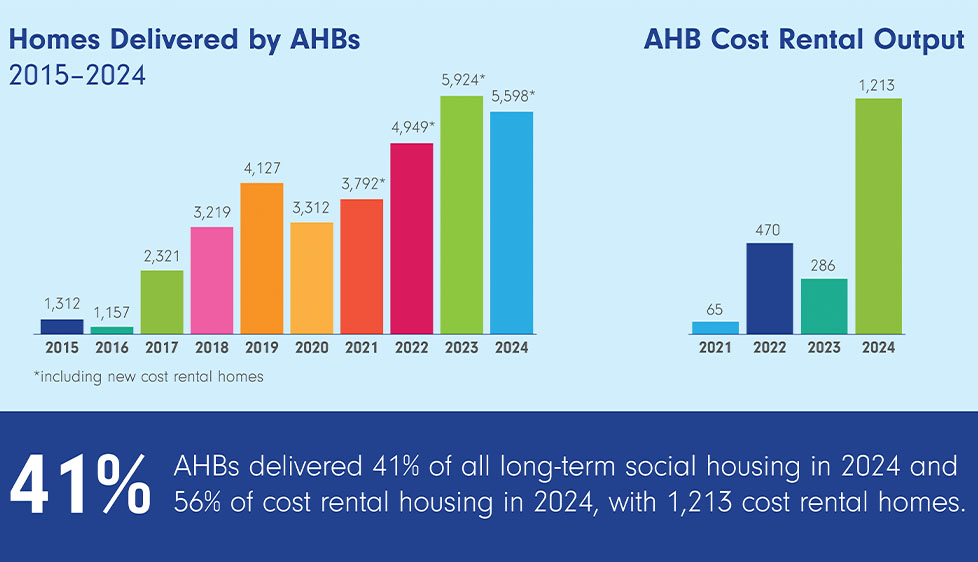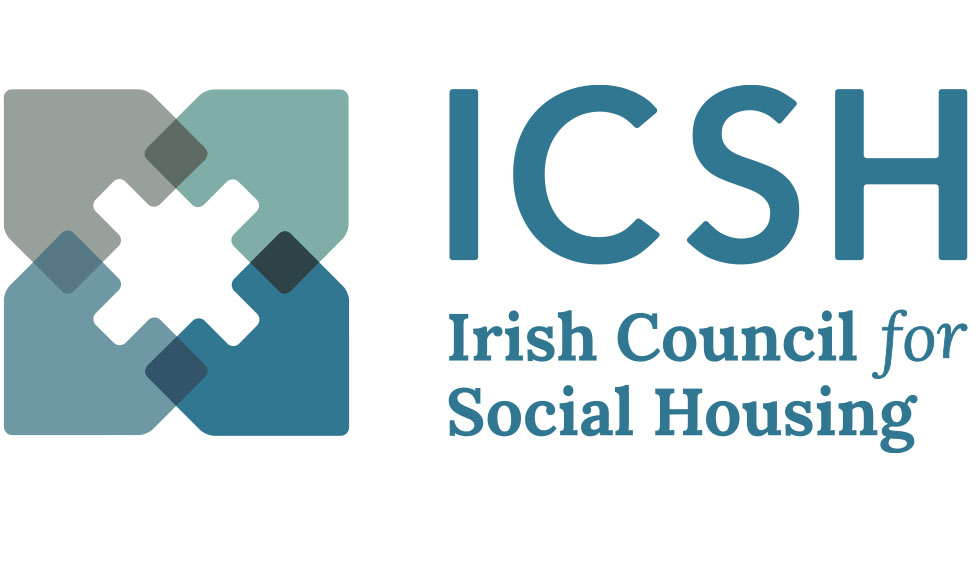
Short-term lets increasingly impacting the housing market
30th June 2025
What the Planning and Development Act 2024 means for residential construction
30th June 2025Enhanced NDP key to social and affordable housing expansion

NDP also needs social and community infrastructure alongside housing.
We eagerly await over the summer some of the major publications which will impact on the housing sector, and in particularly social and affordable housing delivery in the coming years, writes Donal McManus, CEO of the Irish Council for Social Housing.
The revised National Development Plan (NDP), the successor to Housing for All and the AHB Strategic Report will be key reports hopefully providing policy direction, targets and funding envelops. The revised National Development Plan will be the one such important milestone which will be the focus in this article.
Social and affordable housing as key infrastructure
Housing, and social and affordable housing is one of the key priorities (if not the main one) facing many Irish people currently. Housing was articulated as a key national priority at the most recent National Economic Dialogue (NED) gathering in Dublin Castle. Housing is also a key infrastructural deficit where significant intervention is still required. Physical infrastructure deficits such as water, sewerage, and utilities are often seen as the key infrastructural deficits, and they are in many areas. Investment in water and sewerage is central to having the capacity to deliver the 300,000 new homes committed to under the most recent Programme for Government. However, housing and the need for social and affordable housing should be up alongside these pillars in terms of infrastructural deficits and priorities and not be relegated to a secondary discussion otherwise we will be still writing about these housing issues in another five years.
Investment: Making up for lost ground and changing delivery
It must be remembered in terms of housing infrastructure, that Ireland had almost a lost decade of housing supply after 2007 with the property crash and subsequent fiscal crisis. This manifested in a serious reduction in the delivery of social and affordable housing. 2014 was effectively the ground zero year for social and affordable housing delivery. Therefore, Ireland now has around 10 per cent of a social housing stock around half the EU average. The Housing Commission report recommended that the proportion of social and affordable housing should be 20 per cent of the national stock, and this will contribute to the stabilisation of rental market. However, since 2016 in particular, there has been an increase in social and later affordable housing, albeit from a low base. The AHB sector has been a key player in a state-wide social and affordable housing recovery especially through various successful programmes such as CALF and CREL. For example, since 2020, the track record shows the AHB sector has delivered over 24,000 social and affordable homes. These are actual homes that were provided for low income, vulnerable groups and middle groups not future delivery.
As well as support for hard infrastructure in the revised National Development Plan such as investment in social and affordable housing, there needs to be a recognition of social infrastructure required in social and affordable and housing projects in mixed tenure and special needs projects. Housing delivery patterns and needs have changed over the last 20 years in previous National Development Plans such as the mainstreaming of mixed tenure housing projects since 2000. A joint research report by the Irish Council for Social Housing (ICSH) and The Housing Agency in 2022 demonstrated that approved housing bodies (AHBs ) had increased their role in mixed tenure projects from around 20 per cent to 80 per cent of annual delivery over the last 20 years. With new AHB cost rental delivery support by CREL, there has been a need for increased community and communal facilities to ensure long-term sustainability of these homes and communities.
Investment in social and affordable housing meets many objectives
The need for increased social and affordable housing is having a major impact across a whole range of aspects of Irish society from economic competitiveness and employment for new business, health wellbeing, family life, educational attainment, levels of homelessness and enhanced social inclusion and cohesion. In particular, increased social and cost rental housing provision can provide the certainty of delivery over the coming years when awaiting the changes in the private rental sector to enhance investment and supply. Targeted investment in the NDP at 90 per cent of costs for retrofit is needed for older AHBs homes.
AHBs can deliver more with support
The starting point for the revised National Development Plan is stronger than previously. There is more capacity in the social housing sector to deliver, such as with AHBs who are delivering 40-50 per cent of total social housing in various areas, and over 50 per cent of cost rental housing. The pipeline is stronger overall as was required. However, there are a number of AHB social and cost rental housing projects that were brought forward for funding over the last year and are still awaiting approval to begin. Further delays will affect the AHB social and cost rental delivery in 2025, 2026 and 2027 falling below expectations. These AHB projects were painstakingly assembled with often up to 10 public and private partners. As these are real projects, the revised National Development Plan could support these to effectively wash out the backlog and accelerate delivery in the housing crisis. With increased AHB led construction, more capacity building measures for AHBs are essential.
Previously National Development Plans had ambitious and often somewhat unrealistic targets for social and affordable housing without recognition of land requirements. There have been important measures to acquire land for social and affordable housing. However, the mandated Land Development Agency provides a major opportunity to enable land to be provided for social and affordable housing. While initially focusing on population centres of over 10,000, it could also cover wider area for land assembly where even small projects have a significant impact on local communities.
The revised National Development Plan is all about choices. Yes, there is the current global economic environment and the revised EU fiscal rules. The European Commission has even pointed recently to insufficient housing supply having significant economic and social implications. This now can be an opportunity through the NDP review for Ireland take an enhanced lead on housing in advance of the Irish presidency of the EU in the second half of 2026. The revised and enhanced NDP support for social and affordable housing can further change the dial and have a more meaningful impact on Irish society.
W: www.icsh.ie










